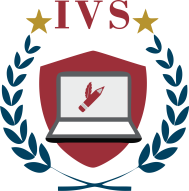Virtual reality (VR) is a groundbreaking technology that immerses users in a completely artificial digital environment. In educational settings, VR has the potential to transform how we teach and learn by making the experience much more interactive and engaging. This technology enables students to explore worlds, conduct experiments, and interact with environments that would otherwise be inaccessible or impractical in a traditional classroom.
The benefits of utilizing virtual reality in education are profound. VR not only enhances the learning experience by providing students with visual and practical contexts to theoretical knowledge but also increases student engagement and motivation. By immersing learners in their subject matter, VR makes learning a dynamic activity and helps bridge the gap between theory and practice.
II. VR Applications in Education
Subject-Specific Applications:
STEM (Science, Technology, Engineering, Math)
In STEM education, VR can revolutionize the traditional learning approach. For example, VR simulations can replace traditional labs in science classes, allowing students to conduct virtual experiments that are too dangerous, expensive, or impossible to perform in school settings. Engineering students can use VR to construct and test models in a virtual space. Math concepts can be visualized in three dimensions, helping students better understand abstract theories.
History and Social Studies
VR brings historical events to life, providing students with the opportunity to witness and interact with past events firsthand. This immersive approach can deeply enhance understanding and retention of historical knowledge. It allows students to visit ancient civilizations, battlefields, or significant political events, making history engaging and interactive.
Language Learning
Virtual reality offers a unique way to practice language skills by simulating conversations within realistic settings. Learners can interact with native speakers and practice everyday communication in different scenarios, enhancing their linguistic abilities and cultural awareness.
Arts and Humanities
VR can transport students to world-class museums and art galleries, allowing them to explore artworks and cultural artifacts that they might never have the chance to see in person. For those studying arts, VR provides tools for 3D modeling and digital design, opening up new avenues for creative expression.
General Applications:
Virtual Field Trips
VR eliminates geographical limitations by allowing students to visit places around the globe without leaving their classroom. From the depths of the ocean to the surface of Mars, virtual field trips can dramatically expand the educational horizon.
Soft Skills Development
Virtual reality simulations can be designed to teach and enhance soft skills such as communication, collaboration, and problem-solving. These skills are critical in the modern workplace and can be effectively developed through interactive VR scenarios.
Special Needs Education
VR can be particularly transformative for special needs education, offering customizable experiences that cater to individual learning requirements. Whether through tailored content or adaptable pacing, VR technology can make learning more accessible for all students.
III. Benefits of VR in Education
Increased Engagement and Motivation
VR’s immersive nature captures the attention of students like no other medium, making education an engaging and fun activity. This increased engagement is often translated into a higher motivation to learn and participate in school activities.
Improved Knowledge Retention and Understanding
Virtual reality helps in consolidating knowledge through interactive and immersive learning experiences. Students are not just passive recipients of information but active participants in their learning processes, which enhances understanding and retention.
Development of Critical Thinking and Problem-Solving Skills
VR environments can present complex problems in a controlled manner, allowing students to experiment with different solutions and see the consequences of their decisions in real-time.
Fostering Empathy and Cultural Awareness
By placing students in different cultural contexts or historical events, VR can foster empathy and a deeper understanding of diverse perspectives. This is particularly valuable in our increasingly globalized world.
Personalized Learning and Catering to Diverse Needs
VR technology allows for personalized learning experiences that can be adjusted according to each student’s learning pace, style, and preferences, accommodating a wider variety of learning needs than traditional educational tools.
IV. Challenges and Considerations
Cost and Accessibility of VR Equipment
One of the primary challenges to integrating VR into education is the cost and accessibility of the necessary hardware and software. Schools must consider the investment in technology against their budgets and resources.
Potential Issues with Motion Sickness and Cybersickness
Some users may experience motion sickness or cybersickness while using VR. It’s essential for educational institutions to understand these risks and prepare appropriate remedies or alternatives for affected students.
Ensuring Educational Quality and Content Development
The development of high-quality educational VR content is crucial. Educators need to ensure that VR materials are not only technologically advanced but also pedagogically sound.
Integration of VR into Existing Curriculums and Teacher Training
Integrating VR into existing educational curriculums poses a challenge. Teachers must be properly trained to use VR technology effectively, and curriculums must be adapted to incorporate new learning modalities.
V. The Future of VR in Education
The future of VR in education looks promising, with the potential for this technology to become a mainstream tool in classrooms around the world. As VR technology continues to develop, its applications in education will likely expand, offering even more innovative ways to enhance learning and teaching. The continued evolution of VR promises to further bridge the gap between traditional educational methods and modern technological capabilities.
VI. Conclusion
Virtual reality holds the potential to revolutionize the field of education by making learning a more immersive, interactive, and effective process. While there are challenges to overcome, the benefits of utilizing VR in education can significantly outweigh these obstacles. With ongoing research and development, and a commitment to integrating new technologies into educational settings, VR stands to offer unprecedented opportunities for educational enhancement. As we move forward, it is crucial for educators, technologists, and policymakers to work together to harness the power of VR in shaping the future of education.
